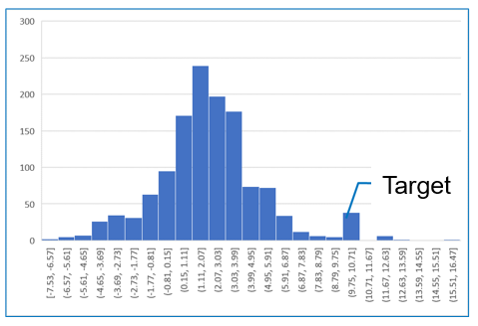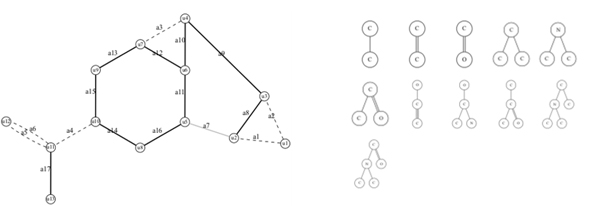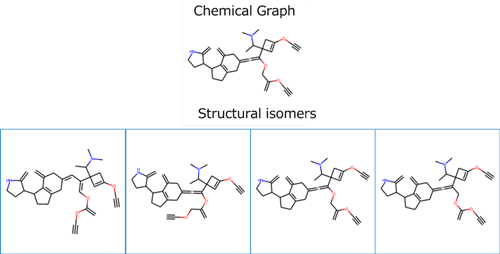- Data Science
- Mechanical / Viscosity / Viscoelasticity
- Thermal
- Small molecule penetration / diffusion / adsorption
- Optical / Electrical / Magnetic
- Interface / Phase Separation / Particle Dispersion
- Molecular structure / Affinity / Solubility
- Other Properties
- Materials Science
- Life Science
[Analysis Example] Inverse analysis of QSPR using mol-infer
Prediction of molecular structure from physical properties
Quantitative structure-property relationships (QSPR), which predict physical properties from molecular and crystal structures, are often performed using machine learning. Here, we perform inverse analysis, i.e., molecular structure is predicted from physical properties. J-OCTA has interface with mol-infer, which is being developed in Nagamochi Laboratory of Kyoto University [1].
First, physical properties are predicted from molecular structures using an Artificial Neural Network (ANN). Next, the inverse operation of the ANN is solved by Mixed Integer Linear Programming (MILP), which enables us to perform fast and accurate operations in the reverse direction, which is not possible with ANN alone.
Figure 1 shows the partition coefficient data used in the test calculations. First, the relationship between molecular structure and physical properties is trained using 1297 data.
 Figure 1. mol-infer's training data and target property (partition coefficient = 10.0)
Figure 1. mol-infer's training data and target property (partition coefficient = 10.0)
Next, we perform the inverse operation using MILP. Targeted partition coefficient is 10.0. A graph structure that seeds the molecular structure and tree structures which correspond to the functional groups are prepared, and these are used to predict the molecular structure.
 Figure 2. Seed structure (left) and Tree structure (right)
Figure 2. Seed structure (left) and Tree structure (right)
The resulting structure is shown in Figure 3. Here, structural isomers were also obtained. For the obtained molecular structure, the forward physical properties were again estimated, and the value of the partition coefficient was found to be 9.8. The obtained molecular structure was shown to almost satisfy the target physical property.
 Figure 3. Molecular structure obtained by mol-infer
Figure 3. Molecular structure obtained by mol-infer
- Related Functions
- MI-Suite (Materials Informatics Suite)
- Reference
- [1] Int.J.Mol.Sci.,22,2847,(2021)


